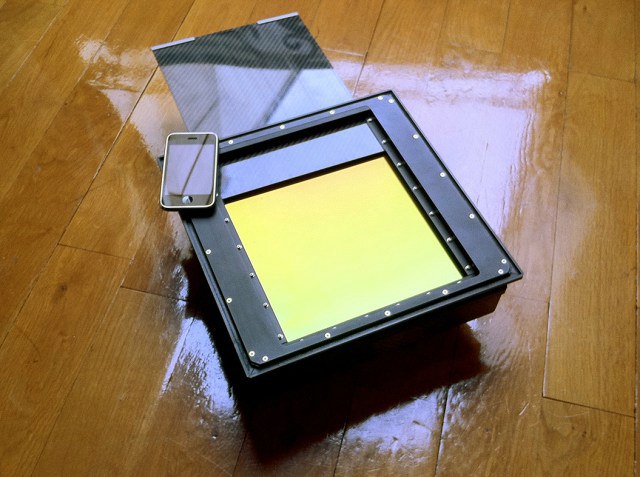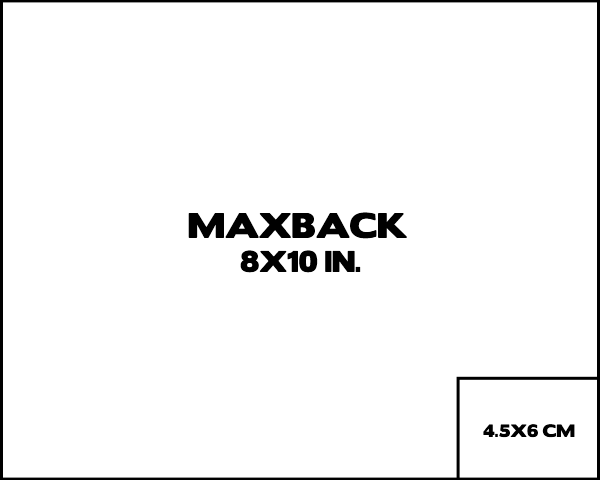Custom digital backdrop, 8x10 inches

Reading Western news feeds, you do not cease to be convinced that the world is not without crazy people. It would seem that photographers are people whose profession threatens to soon become a formless common noun and already have at their disposal a complete set of tools for digital photography. Of course, in the context of the hi-end segment, where film cameras still dominate (again - with plug-in digital adapters) - the choice is a little smaller there, but in any case it is dictated by rather general trends in wide-format photography.
However, one person - Mitchell Feinberg ( Mitchell Feinberg ), who specializes in photographs of beautiful and expensive things, such as cars and jewelry, this was not enough. And he decided not to buy Leaf or Hasselblad, but to sponsor the creation of the world's largest digital adapter for a DSLR camera. Probably, another would have thrown a similar venture halfway through, but Mitchell thought that for him it would fully pay for the costs of the polaroid film, which he buys for $ 50,000 a year (using Polaroid, he takes test photos before the main one). The backdrop was assembled in February 2010 and got to its owner at the beginning of this year.
His own name for "invention" - Maxback. The size of 8 x 10 inches (20 x 25.5 cm) fully satisfies the requirements of Feinberg, which even with all the desire and money could afford, at best, the Hasselblad CFV-50 backdrop, whose dimensions are 36.7 x 49, 1 mm. The biggest digital adapters that a mere mortal can afford, on average, are 4.5 x 6 cm. On an example, it looks like this:
')

Well, there is a difference. However, unlike popular commercial products (such as the already mentioned backdrop from Hasselblad) “Maxback” Feinberg does not give 50 or 80 Mpx - only 10, 16-bit quality. Although this is probably the best ten megapixels today, due to the size of the matrix and the quality of the lenses used. Nevertheless - 10 megapixels is not enough for large-format printing of high density: for billboards, glossy magazines, etc.
Now, instead of taking test pictures with a polaroid 8 x 10 film (which costs about $ 15 per shot in the US), Mitchell first takes a picture with a digital adapter, checking the focus and other parameters of the photo and, if satisfied, making the final shot on a classic film.
As for the price, the investor does not name the exact amount, doing just excuses: “The development and production of two copies was equal to the cost of a good home — before the mortgage crisis.” TechCrunch comments that most likely the amount of manufacturing two such monsters is around $ 500,000.
TechCrunch via APhotoEditor
Source: https://habr.com/ru/post/127140/
All Articles